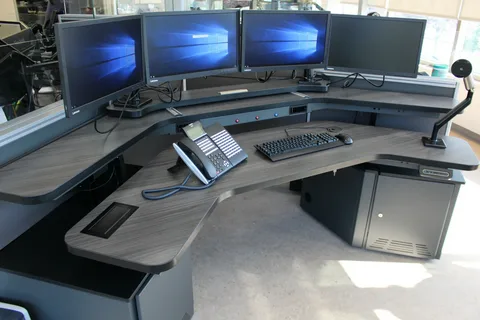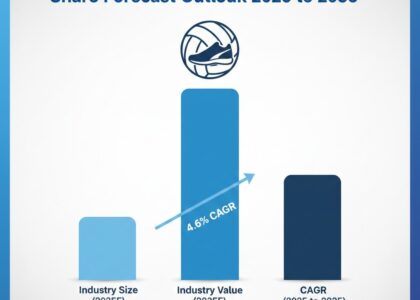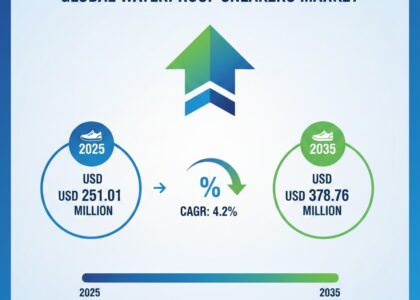The global workstation market is poised for significant growth over the next ten years, with an estimated market value of USD 63.8 billion in 2025 and expected to double, reaching USD 126.7 billion by 2035. This growth is driven by a significant CAGR of 7.4%, indicating strong demand for workstation solutions across various industries.
In a world driven by high-performance computing, real-time rendering, and data-heavy workflows, the unsung heroes behind today’s most advanced industries aren’t always found in the cloud. They’re right at the desks of engineers, designers, analysts, and creators—in the form of powerful workstations.
Often mistaken for just another computer, workstations are purpose-built machines designed to handle the most demanding tasks in fields like architecture, automotive design, media production, healthcare, and scientific research. As industries digitize and workflows grow more complex, the workstation is evolving—not just as a tool, but as a foundation for innovation.
Get Ahead with Our Report: Request Your Sample Now!
https://www.futuremarketinsights.com/reports/sample/rep-gb-1860
More Than a Desktop: Built for Precision and Performance
A workstation isn’t defined by form factor—it’s defined by function. With advanced GPUs, high-core CPUs, ECC memory, and optimized storage configurations, these machines are engineered to support workloads that typical consumer PCs can’t handle.
From running CAD simulations and 3D modeling to training machine learning models or editing 8K video, workstations offer the stability, scalability, and raw power that professionals need to deliver precision under pressure. They aren’t built for browsing—they’re built for breakthroughs.
Outpaced by Cloud Buzz, Yet Essential at the Edge
While cloud computing often steals the spotlight, on-premise workstations continue to prove indispensable—especially in latency-sensitive, bandwidth-intensive, or secure environments. They offer the ability to process massive datasets locally, without dependency on network speeds or remote servers.
For industries that rely on real-time interaction—such as real-time visualization in design, or diagnostics in healthcare—workstations provide the responsiveness and control the cloud can’t always match. They’re not in competition with the cloud; they’re complementary—enabling hybrid workflows that blend local muscle with global reach.
Fueling Innovation Across Disciplines
Workstations are not one-size-fits-all. Their configurations adapt to diverse professional needs. In animation studios, they render complex scenes with minimal lag. In engineering labs, they run simulations of mechanical stress and thermal dynamics. In finance, they crunch through high-frequency trading models.
This versatility has made workstations a pillar in R&D environments, content creation, and technical computing—supporting everything from prototype development to large-scale data analysis with speed and stability.
The Evolving User Expectation
Today’s professionals expect more from their machines—portability, upgradability, and energy efficiency, without sacrificing performance. The workstation market is responding with compact, modular, and mobile designs that still deliver workstation-class power.
Mobile workstations, in particular, are redefining the category—enabling engineers, architects, and creatives to work remotely or in the field without compromising capability. With features like ISV certification, thermal optimization, and advanced display support, they’re bringing the desktop-grade experience into new environments.
Exhaustive Market Report: A Complete Study
https://www.futuremarketinsights.com/reports/workstation-market
Sustainability and Longevity by Design
Workstations are designed not only for power but for durability and longevity. Their components are selected for higher thermal thresholds, 24/7 reliability, and long product lifecycles—aligning with both environmental goals and enterprise budgets.
In many industries, sustainability means extending the usable life of machines, reducing e-waste, and improving energy efficiency. Workstations meet these expectations through modular designs, efficient cooling, and support for software updates and part replacements over the long term.
Quiet Force, Critical Role
Workstations don’t make headlines like AI or VR—but they are the engines quietly powering both. Without them, the simulations wouldn’t run, the models wouldn’t render, and the innovations wouldn’t launch.
As industries push boundaries in design, data, and discovery, the need for high-performance, reliable, and versatile computing will only grow. In this landscape, the workstation is not a relic—it’s a catalyst. Behind every precision-engineered product, cinematic masterpiece, or scientific breakthrough, chances are there’s a workstation at work—powering possibility from the inside out.






